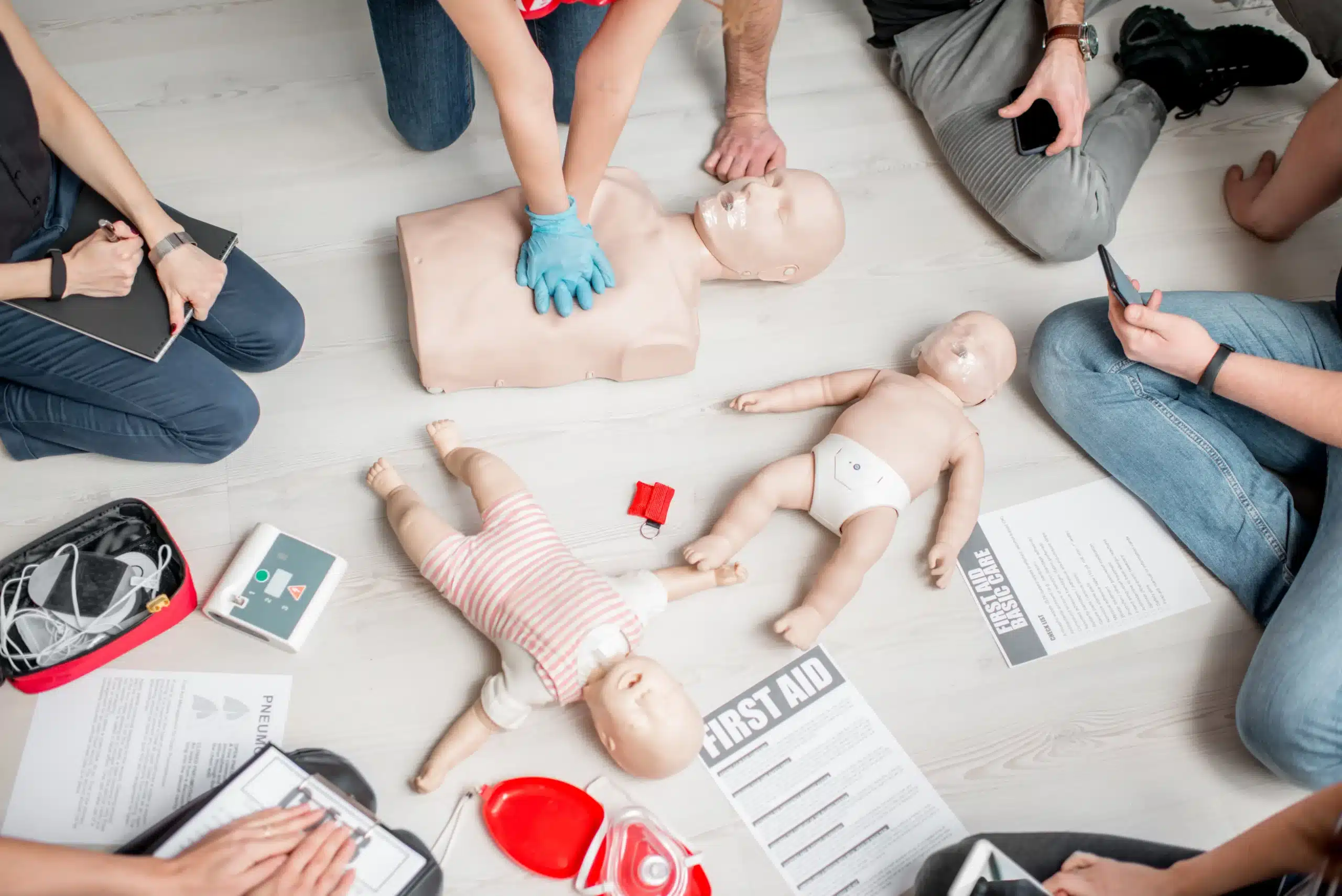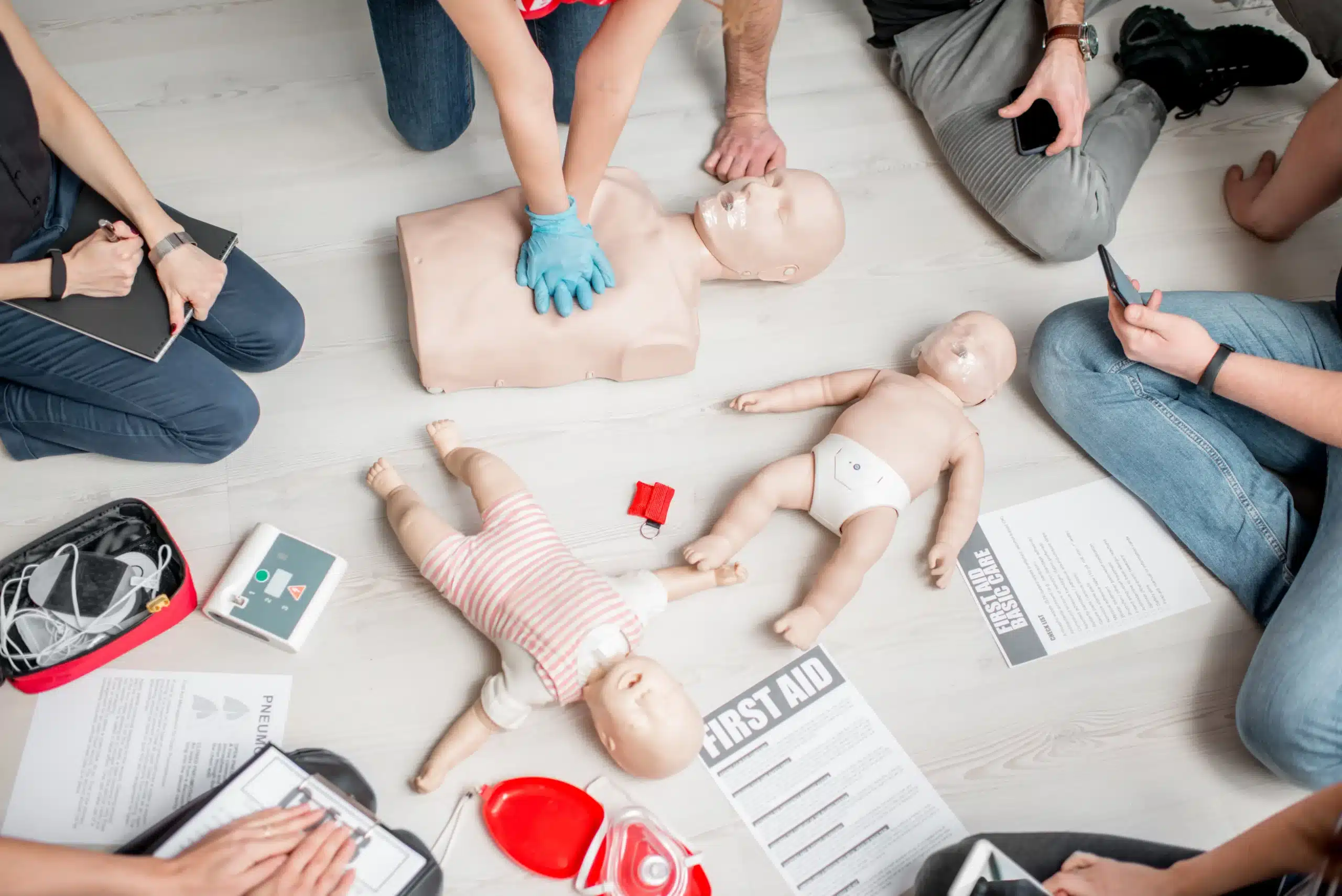Cardiopulmonary Resuscitation (CPR) is a lifesaving skill. Yet, despite its importance, myths surrounding CPR persist. These misconceptions can lead to hesitation or improper technique during emergencies, potentially affecting outcomes. This blog aims to debunk these myths and clarify CPR’s most common misunderstandings.
Understanding CPR’s Importance
Before we dissect these myths, it’s crucial to understand CPR’s role. CPR offers critical intervention during cardiac arrest by manually preserving brain function until further measures restore spontaneous blood circulation. Swift and correct application of CPR can double or even triple survival chances.
Myth 1: CPR is Only for Professionals
The Truth about Layperson CPR
A prevalent myth suggests only professionals should perform CPR. In reality, anyone can and should perform CPR when needed. Layperson CPR can be as effective as that performed by professionals, especially when it comes to chest compressions. CPR courses equip individuals with the knowledge and confidence to act swiftly during emergencies.
Why Everyone Should Learn CPR
You don’t have to be a doctor to save a life. CPR training is widely accessible and designed for people of all backgrounds. Imagine witnessing a loved one collapse unexpectedly. Performing CPR immediately could be their best chance at survival. The more people trained in CPR, the greater the number of potential life-savers in our communities.
Myth 2: You’ll Always Break a Rib
The Reality of Rib Fractures
Rib fractures can occur during CPR, but they are not guaranteed nor the norm. More importantly, the prospect of breaking ribs should not deter someone from performing CPR. Given the choice between potential rib injury and increased survival odds, the latter takes precedence.
The Balance Between Force and Care
Efficient chest compressions require firm pressure. To ensure blood flow, compressions should be about two inches deep. This depth might cause discomfort or fractures, but it’s crucial for effectiveness. Trained professionals emphasize balancing pressure with care to minimize harm while maintaining CPR’s efficacy.
Myth 3: CPR Restores Normal Heart Function
The Purpose of CPR
Another common misconception is that CPR can restart the heart. Instead, CPR’s primary goal is to maintain circulation and oxygenation until advanced care is available. Defibrillation, typically through an Automated External Defibrillator (AED), is what often restores normal heart rhythm.
CPR as a Bridge to Advanced Care
Think of CPR as a bridge. It sustains vital functions and buys time until more definitive interventions, like defibrillation or medication, can be administered. Understanding this distinction emphasizes the importance of initiating CPR immediately, even if the heart doesn’t start beating right away.
Myth 4: Mouth-to-Mouth is Essential
The Shift to Hands-Only CPR
Traditionally, CPR included mouth-to-mouth ventilation. However, recent guidelines suggest that hands-only CPR is sufficient for most bystanders. Continuous chest compressions without interruptions maintain blood flow and are crucial in the first few minutes of cardiac arrest.
When Mouth-to-Mouth is Necessary
While hands-only CPR is effective, there are scenarios where mouth-to-mouth remains necessary, such as in cases of drowning or drug overdose. In these situations, providing rescue breaths alongside compressions can significantly enhance outcomes.
Myth 5: You Could be Sued for Performing CPR
Legal Protections for Good Samaritans
Fear of legal repercussions is a significant deterrent for potential rescuers. Fortunately, Good Samaritan laws provide legal protection to individuals who assist those in peril. These laws cover those who act in good faith, aiming to encourage more people to offer help without fear of litigation.
The Importance of Acting in Good Faith
The key to protection under Good Samaritan laws lies in acting responsibly and without expectation of reward. Staying informed about your region’s specific legal protections can reassure you to act confidently when someone’s life is at stake.
Myth 6: CPR is Ineffective Without Equipment
CPR’s Standalone Power
While AEDs and other emergency tools enhance resuscitation efforts, CPR remains invaluable on its own. Immediate application of CPR preserves vital organ function, increasing survival rates significantly even before advanced tools are available.
The Role of AEDs in Conjunction with CPR
AEDs can deliver life-saving shocks, but their availability may vary. Therefore, knowing how to perform effective CPR without any equipment is crucial. If an AED is accessible, combining it with CPR further elevates the chances of survival.
Myth 7: Only Adults Require CPR
CPR Across Age Groups
CPR isn’t exclusive to adults; infants and children may also need resuscitation. However, the techniques differ slightly based on age. Recognizing these differences ensures that CPR is administered effectively across all age groups.
Tailoring CPR to Age-Specific Needs
For infants, two fingers instead of hands are used for compressions, and breaths are gentler. Understanding these nuances enhances your ability to respond appropriately in diverse emergency scenarios. Pediatric CPR courses provide specialized training to address these differences comprehensively.
Myth 8: CPR is Always Successful
Understanding CPR Success Rates
While CPR improves survival odds, it’s not always successful. Various factors influence outcomes, including the nature of the cardiac arrest and the timeliness of intervention. Being aware of these limitations helps manage expectations and underscores the value of timely defibrillation and professional medical support.
The Value of Early Intervention
Even if success isn’t guaranteed, early intervention dramatically improves chances. It highlights the importance of widespread CPR training and the availability of AEDs in public spaces. Every second counts in cardiac emergencies, and your prompt action could be the deciding factor.
Myth 9: You Should Wait for Professionals
The Critical Role of Bystanders
Waiting for medical professionals during cardiac arrest can cost precious minutes. Immediate bystander CPR significantly increases survival rates. Encouraging immediate response among laypersons is vital for improving community readiness.
Training Empowers Immediate Action
Training transforms potential bystanders into first responders. Community CPR programs not only teach the skill but also instill the confidence needed to act decisively. Your intervention could be the bridge to survival until professionals arrive.
Myth 10: CPR is Only for Heart Attacks
Diverse Scenarios Requiring CPR
CPR isn’t limited to cardiac arrest resulting from heart attacks. Situations like drowning, choking, drug overdose, and severe trauma may also necessitate CPR. Recognizing these diverse scenarios broadens understanding and preparedness for various emergencies.
Expanding CPR Knowledge Beyond Cardiac Arrest
Understanding the different conditions that may require CPR increases its applicability. Comprehensive CPR training covers diverse scenarios, equipping individuals with a broader skillset for emergency response.
Taking Action Beyond Debunking
Armed with the truth about CPR myths, you can now take actionable steps to enhance your readiness. Consider enrolling in a CPR course to gain hands-on experience and certification. Contact us at Safety Training Seminars for more information and to schedule a training session.






